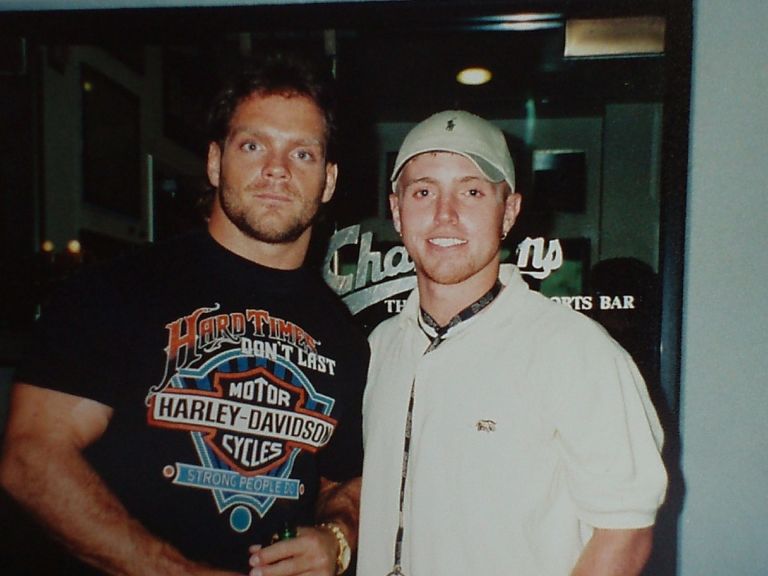When ‘Minnesota Nice’ Isn’t Actually That Nice
After deciding to move to what Wikipedia fondly labels “The Murder Capital of the United States” (i.e. Newark, New Jersey), it seemed that every random stranger in my small Midwestern town had warnings for me.
By ![]() Lauren Smith
Lauren Smith


After deciding to move to what Wikipedia fondly labels “The Murder Capital of the United States” (i.e. Newark, New Jersey), it seemed that every random stranger in my small Midwestern town had warnings for me.
“You gotta be careful,” one tow truck driver told me matter-of-factly as he hauled my defective Neon off the interstate and back into town. “Them East Coast folk are heartless. Ah man, I could tell so many stories.”
And he did. For 30 minutes, he recounted story after story of his travels. He ranted about the horrendous traffic. The expensive food. The abrasive strangers. The lack of hospitality. “I mean, you can’t even make eye contact with these people!”
Instead of wishing me well on the biggest and scariest move of my life, he was one of many who filled me with self-doubt, fear, and anger. Oddly, it only strengthened my decision to escape.
All the regions have their stereotypical personalities. The South has its hospitality. Southern Cali is “laid back.” And of course, New York and its surrounding cities are notoriously considered rude and standoffish. The more I traveled, I certainly found examples of each region’s stereotype, but I also observed the overlooked nuances of the regions’ complex personalities.
Now that I live in New York (where most people are not rude at all), people comment on my distinctive “sweetness.” My kind demeanor demonstrates to strangers that I am trustworthy and compassionate. That I could never kill a spider. That I take a sincere interest in others’ well-being. In contrast to the candid and intensely focused urbanites around me, I embodied Minnesota Nice.
But as I adjusted to East Coast life, I noticed a minor flaw in my candy-coated upbringing: a lack of assertiveness that often hindered my ability to communicate effectively. I allowed minor disputes with friends to fester silently. I frequently felt exploited and subservient in the workplace, and I never stood up for myself or voiced my opinions.
Later, when I visited South Dakota with my emerging candor, I suddenly recognized the paradox of Minnesota Nice. While much of the stereotype is true, the dirt in the fingernails is how this culture of congeniality also breeds passive-aggressiveness.
Midwesterners are socially trained to avoid unpleasant conflict at any cost. Being cordial and pleasant are the most desirable traits. Thus, any attempt to express discontent is vocalized condescendingly, but masked as a civil statement. It’s hardly detectable, but once you notice it, you can never disregard it, like a tiny scratch carved onto the glossy black surface of an Aston Martin.
For instance, I once showered at a state park in South Dakota. I have a remarkably fast routine, but on this day, I also shaved my legs. After drying off and exiting the shower stall, a woman in her 60s stood waiting with her lips pursed. “That was a long shower,” she observed. The words contained no direct insult, but her icy tone cut through me like the razor in my shower bag.
This pseudo-confrontation opened my eyes to the artful veneer of Minnesota Nice. I observed my mother making passive-aggressive accusations at my father. I heard my grandma passive-aggressively commenting about her neighbors and peers. I endured passive-aggressive responses from baristas and clerks after making polite requests, even when I accompanied them with the unnecessary apologies we Midwesterners insist on spouting. (“I’m sorry, but could I have some ketchup? Sorry to bother you. So sorry.”)
The more aware I became, the more I realized that I, too, defaulted to a passive-aggressive tone when displeased. I began publicly calling myself out (“I’m sorry. That was passive-aggressive. So sorry!”) and then mindfully rephrasing my comment in a more constructive manner.
While I’m proud of my upbringing and believe Midwestern culture does foster a genuine “niceness,” this cultural trait would be most useful in an ideal universe. However, in a world saturated with conflicting interests, Midwesterners falter when inevitable disagreement arises. At that point, Minnesota Nice becomes a hindrance to effective and more positive communication. ![]()




